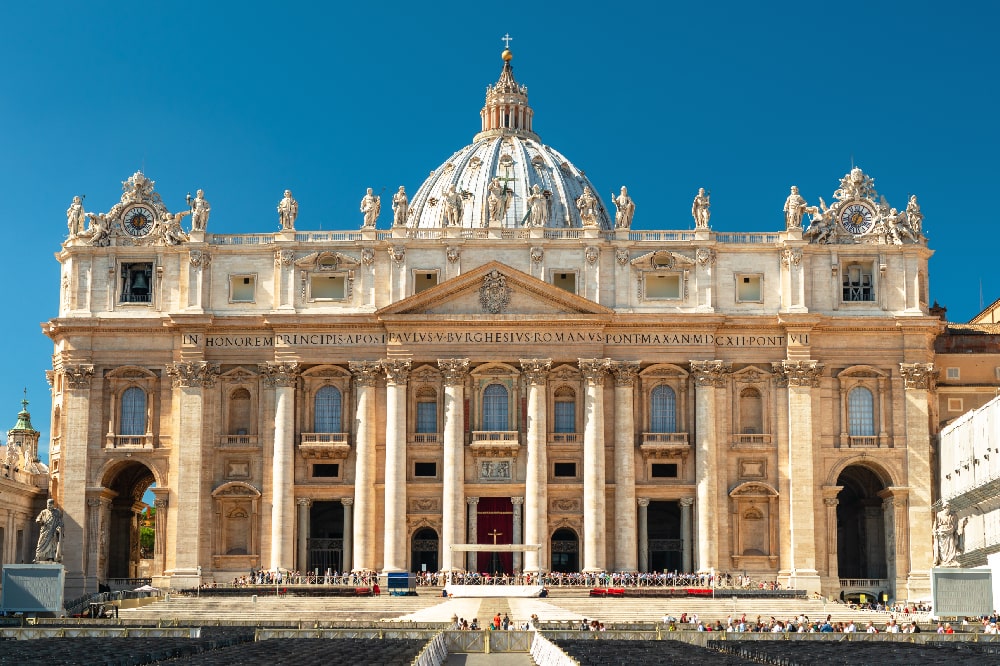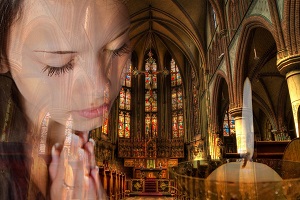The Basilica of the Holy Sepulchre in Jerusalem is a spiritual landmark for Christians worldwide, regardless of their denomination. Let’s explore its history and secrets.
Contents
The Basilica of the Holy Sepulchre is much more than a holy site visited every day by pilgrims and believers from around the world. For Christians, it is the very heart of the sacred world, the place where Jesus died and was buried. Just this fact helps us understand its importance, the profound symbolic value, and more, with which it is permeated.
If the awareness of the dramatic and miraculous events that took place in these locations isn’t enough to make them unique, the thought of the countless people who have visited over the centuries, millennia, with their load of faith, expectation, burdened by their own guilt and the hope of being relieved from it, helps us perceive the spiritual power that permeates this place.
Even today, as in the past, believers touch the Stone of Unction, on which the body of Christ was laid just after being taken down from the cross, or linger in the Chapel of Calvary, the place of Jesus’ crucifixion. In these evocative stations of faith, the Via Crucis takes place every day, involving those who want to embark on a spiritual and sacred journey inside the basilica. A procession that, with necessary changes, has been taking place since ancient times. Because it was inevitable that anyone who arrived in these places would want to retrace the steps of Jesus’ passion and death, to get as close as possible to his example, to his human experience, to feel him closer.

But where is the Basilica of the Holy Sepulchre located?
The Holy Sepulchre: What is it, and where is it located?
It is told in the Gospels and sacred texts that Calvary, the mountain on which Jesus was crucified, stood outside the walls of Jerusalem, in an area that once housed a stone quarry, later used for death sentences and burials. Jewish law, in fact, prohibited them from taking place within the walls. Calvary, or Golgotha, whose name means “place of the Skull,” was presumably the highest point of this land, which, once it lost its usefulness as a quarry, was used for gardens, orchards, and tombs. The name “Place of the Skull” would derive from the belief that the tomb of Adam was located here, or more likely, because it was not difficult to come across the skulls of men sentenced to death and not buried, or even because the places designated for crucifixions were decorated with painted skulls under the crosses.
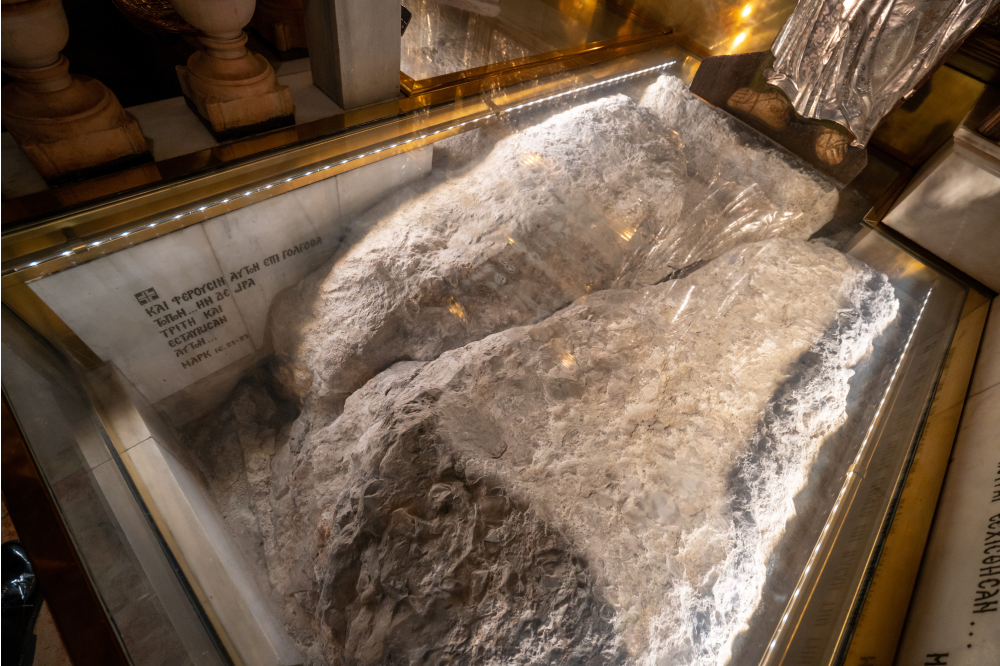
The fact remains that this area, at a later time, probably around 41–44 AD, was enclosed within the new walls erected by Herod Agrippa.
The History of the Holy Sepulchre
Roman Colony
In the years immediately following the death of Jesus, the place of his passion and burial became a pilgrimage destination for the early faithful. But Jerusalem was a Roman colony. Between 132 and 135 AD, a violent rebellion broke out, known as the Bar Kokhba revolt, named after Simon Bar Kokhba, the presumed messiah who led it. The Jews revolted against Emperor Hadrian‘s prohibition of circumcision and his plan to demolish old Jerusalem to build a new city dedicated to the worship of Jupiter. Exactly this happened, and on the ruins of Jerusalem, the emperor built Aelia Capitolina. All the sacred places to the Jews within the city walls were converted into places of worship for pagan gods, while an additional temple dedicated to Venus was founded in an old burial area frequented by Christians. This was the place that housed the tomb of Jesus Christ.

5 places of pilgrimage to go to at least once in a lifetime
God’s action on this Earth leaves a strong mark that attracts us: here are five pilgrimages of faith to be made…
The Constantinian Basilica
Emperor Constantine was the architect of the first Basilica of the Holy Sepulchre, around 326 AD. By his order, the Bishop of Jerusalem, Macarius, began demolishing the ancient pagan temples, and by digging near Golgotha, the remains of Christ’s tomb were unearthed. It is said that the emperor’s mother, Helena, played a very important role in the excavation of the sacred site, where she discovered the True Cross. By Constantine’s order, the first Basilica of the Holy Sepulchre was erected in these places, inaugurated in September 335 AD.
The Constantinian Basilica consisted of three main buildings: the actual basilica, or martyrium, an imposing construction formed by five naves divided by columns and pillars; the triportico, a large atrium closed by a colonnade that surrounded the rock of Calvary; the so-called Anastasis, the church of the resurrection, a round mausoleum topped by a dome with an open oculus erected specifically to protect the remains of the cave identified as the burial place of Jesus. The latter was incorporated into a shrine or kouvoulkion (from the Greek, sanctuary). Around it were smaller buildings intended for the accommodation of priests and services.
Persian Invasion
In 614 AD, the Persians led by Khosrow II took Jerusalem. For three days, the invaders destroyed and looted the city, and even the True Cross was stolen. The Constantinian Basilica was set on fire, and many of the faithful who had taken refuge there died. Only in 630 AD, thanks to the Byzantine emperor Heraclius, who liberated the city and funds collected by the abbot of St. Theodore, Modestus, was the Basilica of the Holy Sepulchre rebuilt, and the True Cross recovered and taken to Constantinople.
When the city fell again into enemy hands in 638 AD, by Caliph Omar, he respected the sacred place and issued a decree prohibiting Muslims from praying within the walls of the martyrium. Omar allowed pilgrimages to the Basilica of the Holy Sepulchre to continue undisturbed, and the place was enriched with new buildings and precious relics, such as the cup of the Last Supper, the sponge with which Jesus was given vinegar to drink, and the lance with which Longinus pierced his side.
Between 746 AD and the early 9th century, the basilica was damaged by violent earthquakes.
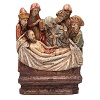
The Destruction of Al-Hakim bi-Amr Allah
In October 1009 AD, the church was almost completely destroyed by the order of a fanatic caliph, Al-Hakim bi-Amr Allah, who had decided to destroy all the churches in Palestine, Egypt, and Syria. He razed what remained of the martyrium and even the Edicule that housed the Tomb. Only part of the Anastasis resisted the destructive fury of the caliph’s men, who, however, stole every valuable object.
The Byzantine emperor had the architectural complex rebuilt in 1048, but unfortunately, the Constantinian Basilica was lost forever.
The Crusader Reconstruction
During the First Crusade, Jerusalem was reconquered by soldiers led by Godfrey of Bouillon, who assumed the role of regent of the city with the title of “Advocatus,” Defender of the Holy Sepulchre. By his will, the Sanctuary of the Holy Sepulchre was modified in a Romanesque style, with a circular plan and the addition of a bell tower and a Chorus Dominorum. In these years, the Basilica took on more than ever the appearance of a place destined to collect, preserve, and glorify all the objects and memories that recalled the death and resurrection of Christ.
Jerusalem was then reconquered by Muslims led by Saladin (1187), and the Holy Sepulchre was again closed and forbidden to worship. In 1244, the invasion of the Khwarazmian Empire brought new looting and destruction to the building.
It was Saladin himself, to make peace with Pope Innocent IV, who decided to repair the damage suffered by the Basilica and then entrusted its custody to two Palestinian Muslim families, the Nusayba and the Ghudayya, to allow pilgrims to visit it. Pilgrims had to pay a fee that gave them access to the Basilica and ceremonies. Today, the Nusayba and Ghudayya still hold the key to the entrance gate of the Church of the Holy Sepulchre.
The Franciscans in Jerusalem
In the following years, Western sovereigns tried to ensure the safety and access of pilgrims visiting the Holy Sepulchre through agreements and negotiations. In 1342, Pope Clement VI agreed to entrust the custody of the Holy Sepulchre to the Franciscan Order, which has been in charge of the Chapel of the Apparition of Jesus to his mother, or the Chapel of the Blessed Sacrament since then. Priests of different denominations began to live peacefully within the walls of the Sanctuary.
Status Quo
But soon tensions resumed regarding who had the right to guard the Holy Sepulchre or not. In a decree signed by the Sublime Porte on February 8, 1852, the Status Quo defined the property and access rights of Christian communities within three sanctuaries in the Holy Land: the Holy Sepulchre in Jerusalem; the Tomb of Mary in Jerusalem; the Basilica of the Nativity in Bethlehem.
This decree aimed to end disputes between the Greek Orthodox Church and the Catholic Church and favoured the former. Even today, the Patriarch of the Greek Orthodox Church has the cathedra and the katholikon, the main church, in the Basilica and establishes the places of worship and celebration for other denominations.

The Assumption of Mary and the most characteristic celebrations
15 August is not just an occasion for partying and outings. We…
The Holy Sepulchre Today
On February 25, 2018, the doors of the Basilica of the Holy Sepulchre were again closed in protest against the authorities of Jerusalem who wanted to change the Status Quo by imposing new taxes on churches. This request was later withdrawn.
Today, the Basilica of the Holy Sepulchre remains a place of great suggestion, where countless architectural and decorative styles often blend in discordantly, telling a story of conflicts and harmonies, suffering and redemption, but above all, of faith beyond time.

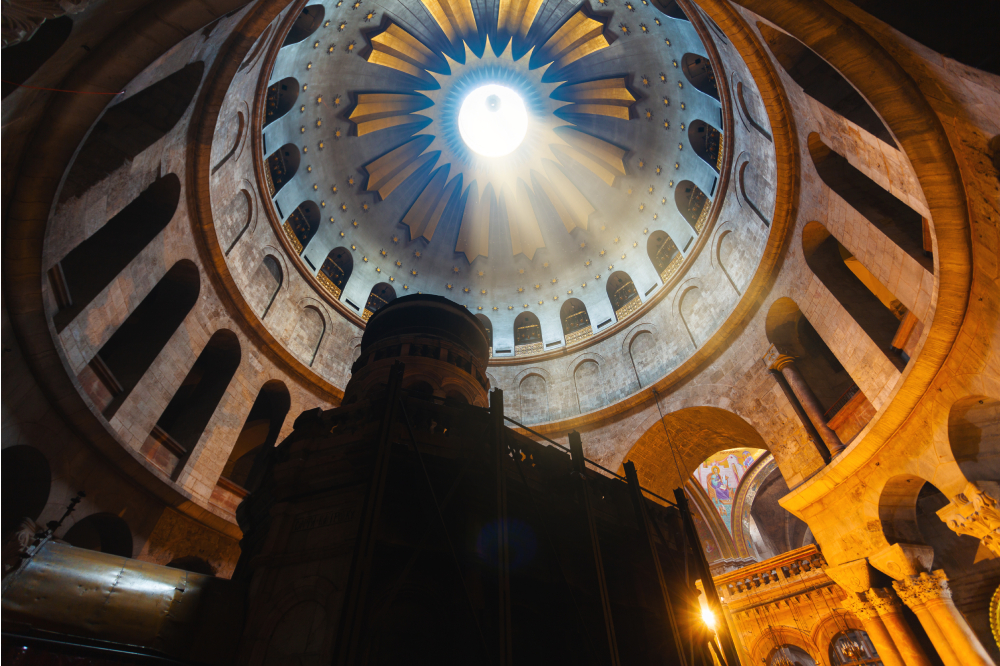

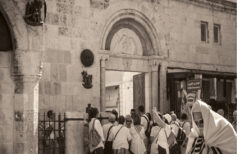
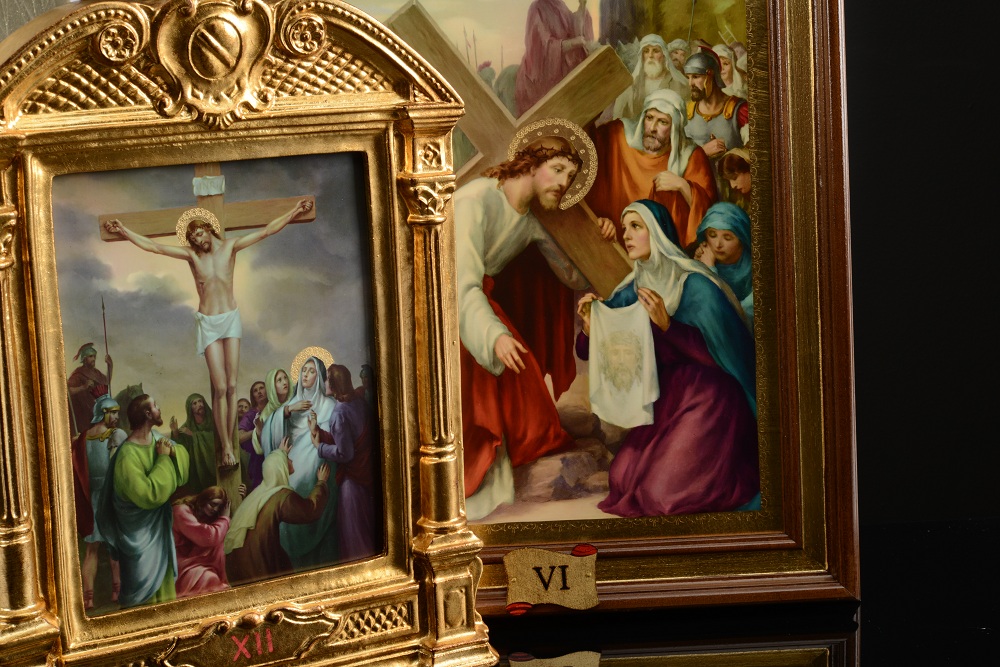
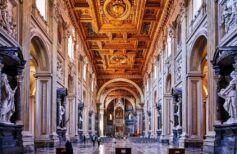
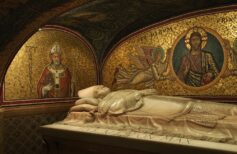
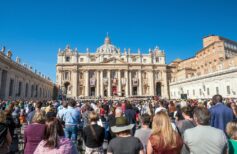
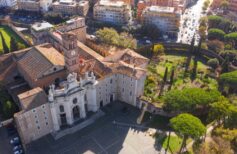

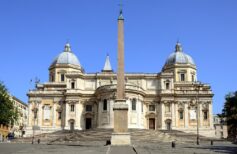








 25 August 2025
25 August 2025

